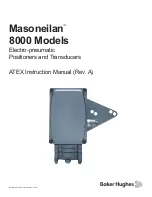
computer radio control system
EN
4.
4.
You can adjust the throw limit to prevent a surface or
linkage from hitting a mechanical stop or to prevent the
servo from over-driving its mechanical throw range.
This allows you to prevent mechanical servo damage.
Advice:
4.
Max Positive/Max Negative Throw
This item sets the useable end points of the transmitter output
function, i.e. how far the transmitter control element can move each
surface. This functon is used to set your maximum control throws for
flight and to limit any potential binding of a linkage or surface. This
limit can be exceeded by the use of mixes or combined functions.
The size of the maximum throw can influence trim
settings, dual rate throws and other proportional
setups.
Note:
5.
Max Positive/Max Negative Limit
These restrict the absolute throw of the receiver channel output.
This limit can never be exceeded by any combination of functions or
mixes.
When building a model try to mechanically adjust the
neutral positions as perfectly as possible. If you are
going to use a high „Center (Subtrim)“ value in order to
set-up a servo neutral, the resulting servo throw will be
restricted.
Advice:
This function is great for timing retract gear servos.
Advice:
6.
Servo Reversing
Use this item to reverse the direction of a servo’s travel.
7.
Delay of positive/negative
This item allows you to delay the servo channel‘s travel time
between both end points. This can be defined for the positive and for
the negative value (each travel direction). For instance, the opening
of a landing gear can be slower, than when it retracts.
Summary of Contents for Duplex DC16
Page 63: ...4...
Page 67: ...computer radio control system EN 4 4...
Page 69: ...computer radio control system EN 4 4...
Page 71: ...4 4...
Page 76: ...computer radio control system EN 4 4...
Page 78: ...computer radio control system EN 4 4...
Page 80: ...computer radio control system EN 4 4...
Page 82: ...computer radio control system EN 4 4...
Page 86: ...4 4...
















































